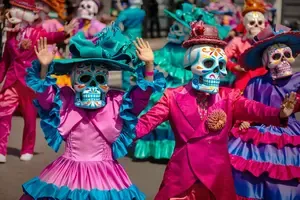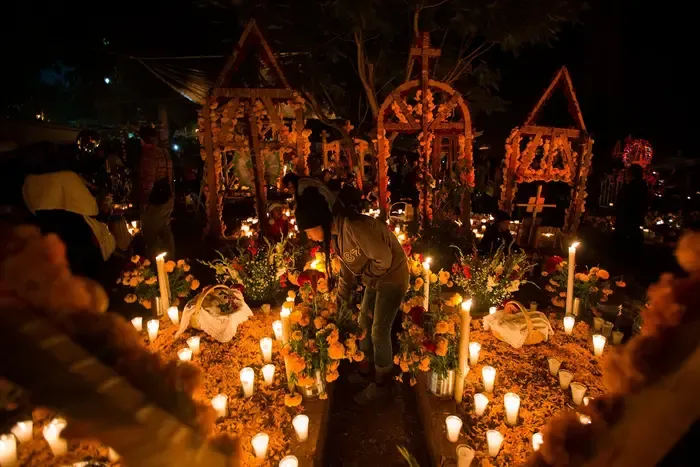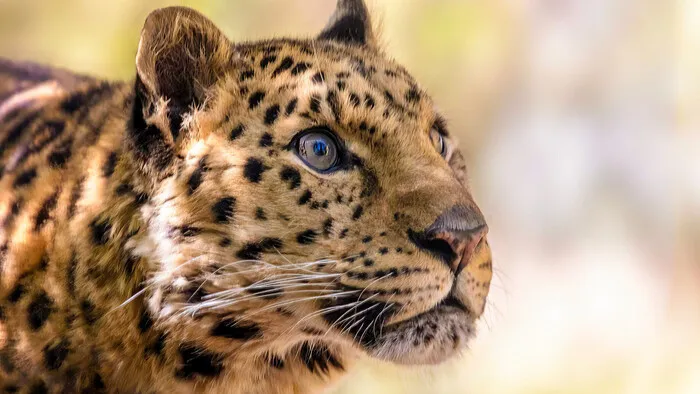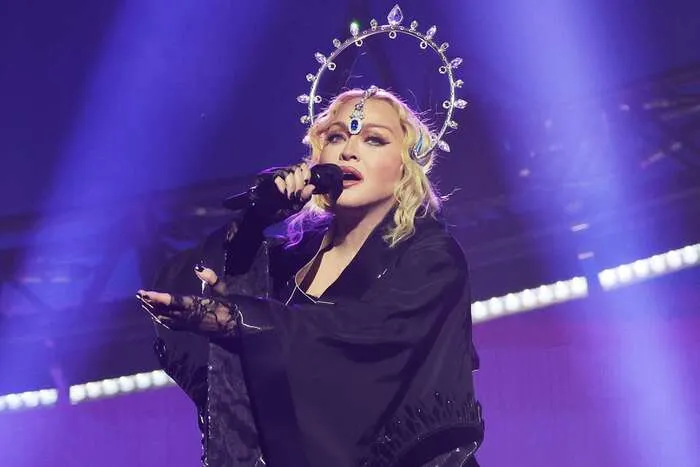In the vibrant tapestry of Mexican culture, one holiday stands out as a symbol of love, remembrance, and celebration—the Dia de Los Muertos, or the Day of the Dead. This rich and colorful tradition, observed on November 1st and 2nd, has roots deeply embedded in the ancient indigenous practices of Mexico.
The origins of Dia de Los Muertos can be traced back over 3,000 years to the Aztec civilization. The Aztecs dedicated the entire ninth month of their solar calendar to honoring the ancestors and the goddess Mictecacihuatl. During this month-long celebration, the Aztecs participated in rituals, ceremonies, and feasts to honor their departed loved ones. This ancient reverence for the cycle of life and the passing away laid the foundation for Dia de Los Muertos as we know it today.
Over time, as Spanish colonization merged with indigenous traditions, Dia de Los Muertos evolved into a syncretic celebration that intertwined Catholicism with pre-Hispanic beliefs. The All Saints’ Day (Día de Todos los Santos) on November 1st and All Souls’ Day (Día de los Fieles Difuntos) on November 2nd, as introduced by the Spanish, became fused with indigenous practices, giving rise to the vibrant and unique celebration we witness today.
Roots in Ancient Traditions
Dia de Los Muertos traces its origins to the Aztec civilization and other ancient indigenous cultures of Mexico, where passing away was not viewed as an end but as a natural part of the human journey. Among the Aztecs, the festival originally lasted an entire month, marking the ninth month of the Aztec solar calendar. During this time, the goddess Mictecacihuatl, also known as “La Catrina,” was honored. Mictecacihuatl played a crucial role in guiding the souls of the departed to their resting place in the afterlife.
The Aztecs would gather to pay tribute to their ancestors through elaborate rituals, ceremonies, and offerings. The concept of passing held a unique duality in Aztec beliefs—it signified both an end and a continuation. This profound connection between the living and the gone laid the foundation for the modern celebration of Dia de Los Muertos that we witness today.
In addition to the religious significance, Dia de Los Muertos was also influenced by the Spanish colonization of Mexico. The Spanish conquerors attempted to suppress indigenous rituals, but the fusion of Aztec traditions with Catholicism resulted in the evolution of Dia de Los Muertos into a syncretic celebration.
The dates of the festival were shifted to align with the Catholic holidays of All Saints’ Day and All Souls’ Day, further blending the cultural elements of the indigenous and colonial influences. Today, Dia de Los Muertos serves as a testament to the resilience of cultural identity, standing as a vibrant and cherished celebration that bridges the ancient past with the present, reminding us all of the enduring ties that connect the living to the spirits of the departed.
Altars and Ofrendas of the Holiday
A central aspect of Dia de Los Muertos is the creation of elaborate altars, or ofrendas, adorned with marigolds, candles, and the favorite foods and possessions of the departed. Families spend days meticulously arranging these altars to create a welcoming space for the souls to return.
The ofrendas serve as a tangible expression of love and remembrance, fostering a connection that transcends the boundaries of our world and the spiritual world. Each element on the ofrenda holds a symbolic significance. Marigolds, known as cempasúchil, are believed to guide the spirits back to the world of the living with their vibrant color and strong fragrance.
Candles, often arranged in the shape of a cross, represent the guiding light for the souls on their journey. The favorite foods and drinks of the departed are carefully laid out, symbolizing the joyous reunion of the family and their beloved departed. Photographs, mementos, and personal items of the deceased are also displayed, providing a snapshot into their lives and the cherished memories shared with the living.
This act of setting up the ofrenda becomes a labor of love, with families paying meticulous attention to every detail, ensuring that each item resonates with the essence of the departed. The ofrenda, thus, transforms into a bridge between the tangible and the spiritual, where the living commune with the departed in a seamless dance of love and remembrance.
Calacas and Calaveras
Skeletons, or calacas, and whimsical skull-shaped candies known as calaveras, are iconic symbols of Dia de Los Muertos, offering a unique perspective on the intertwined relationship between the living ones and the ones that are gone. Rather than shying away from the concept of mortality, these representations stand as powerful affirmations of the Mexican worldview—an outlook that embraces the passing as an inseparable and natural part of the human experience.
In Mexican culture, passign away is not perceived as an endpoint, but rather as a continuation of the journey. The vibrant and artistic portrayal of skeletons and skulls during Dia de Los Muertos serves as a testament to this philosophy. The intricate designs, bright colors, and playful depictions infuse an element of joy into the visual representation of “La Muerte”.
Instead of being somber, the calacas and calaveras become whimsical, almost inviting a dance with the departed spirits in a joyous celebration of their existence. This celebration is deeply rooted in the belief that, during Dia de Los Muertos, the veil between the living and the gone becomes thin, allowing for a spiritual communion.

In essence, the whimsy and vivacity surrounding calacas and calaveras in Dia de Los Muertos challenge conventional perceptions of passing away. Instead of dwelling on the sorrowful aspects of loss, this Mexican tradition encourages a lively celebration of the connections that endure beyond the physical realm. Families welcome back their departed loved ones not with fear, but with open arms and laughter.
Sugar Skulls and Sweet Remembrances
One of the most captivating aspects of Dia de Los Muertos is the artistry involved in crafting sugar skulls. These delectable confections are not merely treats; they are expressions of love, creativity, and respect for the departed. Families and artisans invest time and skill in creating these edible masterpieces, infusing each skull with a unique personality that mirrors the essence of the loved one being honored.
As the vibrant hues of icing come together to form intricate designs, the sugar skulls become personalized tributes. The names of the departed are carefully inscribed, transforming each sweet creation into a cherished memento. Gifting these adorned skulls is a tradition filled with profound meaning—a gesture that transcends the boundaries between the living and the gone. It’s a way of saying, “You are not forgotten; you are celebrated.”
Beyond their aesthetic appeal, sugar skulls serve as a reminder of the interconnectedness of worlds. The sweetness of the confection is a metaphor for the enduring love and fond memories that linger even after a loved one has passed away. The act of exchanging sugar skulls is a communal experience that reinforces the belief in the continuity of existence, showcasing that passing away is not a final farewell but a step in the eternal dance of life.
Communal Celebrations and Festivities
Cemeteries transform into lively hubs of activity during Dia de Los Muertos. Families gather at the gravesites of their loved ones, decorating tombstones with marigolds and candles. The air is filled with the sweet aroma of copal incense, believed to purify and guide the spirits back to the world of the living.
The communal spirit extends to shared meals, where families come together to enjoy traditional foods and share anecdotes about the departed, keeping their memories alive through storytelling. In public spaces, the atmosphere is charged with the rhythmic beats of music and the joyous movements of dance.
Traditional folk dances, like the Danza de los Viejitos, showcase the cultural heritage passed down through generations. The lively festivities, punctuated by laughter and shared joy, create a profound sense of unity. It is during these moments that the boundaries between individuals blur, and a collective spirit emerges, reinforcing the idea that the worlds are interconnected threads woven into the fabric of existence.
Conclusion: Dia de Los Muertos and it’s Cultural Meaning
In the heart of Dia de Los Muertos lies a celebration that transcends sorrow and embraces the profound beauty of life’s cycle. The fine line between the world of living and the spiritual world is not a boundary to be feared but a bridge to be celebrated.
As we unravel the layers of this Mexican holiday, we discover a cultural tapestry woven with love, remembrance, and the resilience of the human spirit. Dia de Los Muertos beckons us to reconsider our perceptions and invites us to celebrate the cherished memories that bind us to our roots, our loved ones, and the eternal dance of life.


